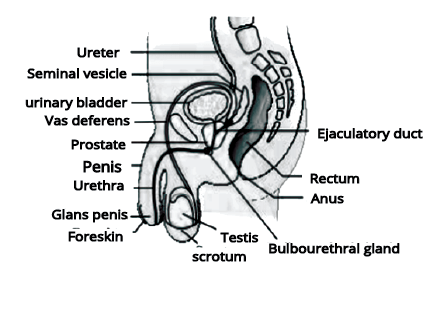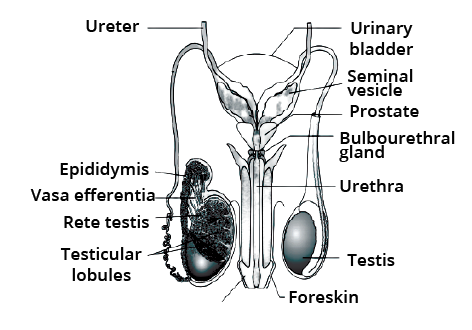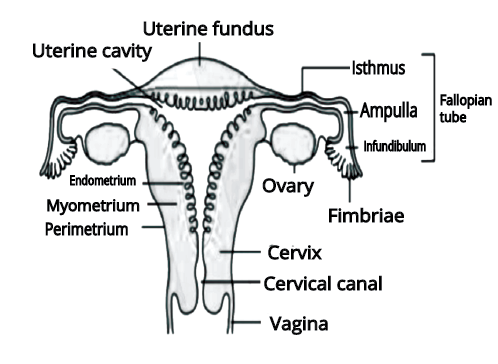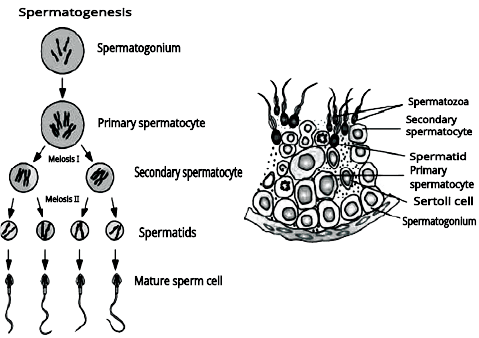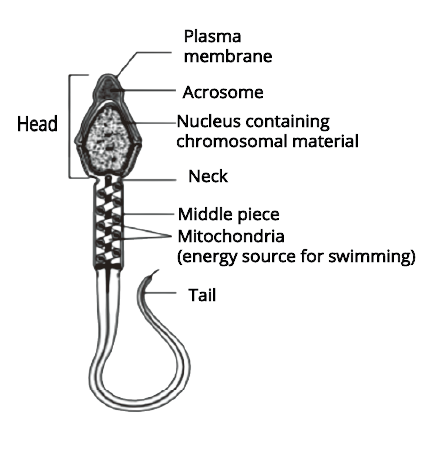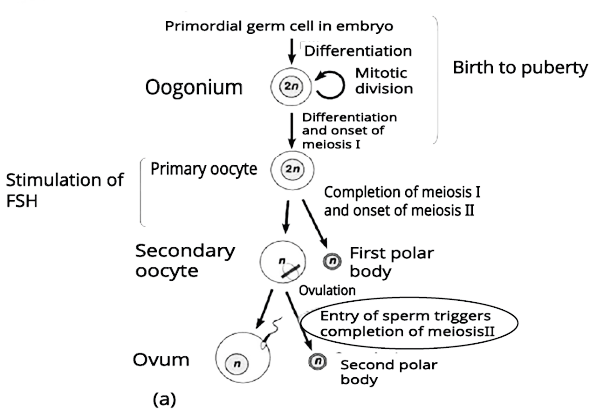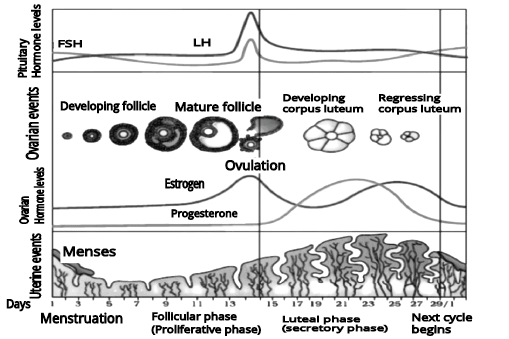Chapter 2 Human Reproduction Class 12 Notes PDF - FREE Download


FAQs on Human Reproduction Class 12 Notes: CBSE Biology Chapter 2
1. What are the Hormones Required for the Regulation of Spermatogenesis?
There are quite a few hormones involved in the regulation of spermatogenesis. Firstly, Gonadotropin which gets secreted during puberty and acts at the anterior pituitary gland. This stimulates the production of FSH and LH. Secondly, Luteinising hormone which serves as Leydig cells that facilitates androgen secretion and synthesis. Thirdly, Follicle-stimulating hormone which reacts with the Sertoli cells, triggering secretion factors helping in the process of spermatogenesis. Besides, two other hormones – Androgens and Inhibin are also necessary for spermatogenesis.
2. How can Human Reproduction Class 12 Short Notes help in exam preparation?
Human Reproduction Class 12 Notes offer concise summaries, key points, and visual aids that facilitate quick revision and a better understanding of complex concepts.
3. What are the Organs Associated with the Male Reproductive System?
The various organs associated that constitutes the male reproductive system are ureter, seminal vesicle, urinary bladder, vas deferens, prostate, penis, glans penis, foreskin, testis, scrotum, ejaculatory duct, rectum, anus and bulbourethral gland.
4. Which are the Various Parts of Sperm?
The structure of sperm is segregated into the head, neck, middle piece and tail and is surrounded by a plasma membrane. A sperm’s head portion contains a haploid nucleus and anterior portion is filled with acrosomes. Next, the middle part of a sperm consists of multiple mitochondria which release energy for tail movement.
5. What are the important topics covered in Class 12 Biology Chapter 2?
Class 12 Biology Chapter 2 deals with human reproduction. It is an interesting chapter and includes many important topics. The most important topics covered in Class 12 Biology Chapter 2 include the male and female reproductive system, organs of the male and female reproductive system, spermatogenesis, fertilization, development of the embryo in the female uterus, and delivery. Students can learn many important things about the process of reproduction in this chapter.
6. Where can I find Class 12 Biology Chapter 2 notes?
Students can easily download the Human Reproduction Class 12 Short Notes PDF from Vedantu. All notes are available with detailed explanations of all important topics. Students can easily understand the organs of the reproductive system and the entire process of reproduction from the Class 12 Biology Chapter 2 notes available online. All Biology notes are available in simple and easy-to-understand language.
7. What is the use of studying from Human Reproduction Class 12 Notes given on Vedantu?
Students can score very high marks in Class 12 Biology by studying from the notes given on Vedantu. Biology notes for Class 12 students are prepared by keeping in mind the important topics for the exams. All questions are based on the latest exam pattern suggested by the CBSE board. Students can clear their doubts by reading the Class 12 Biology notes given on the Vedantu website. Class 12 Biology Chapter 2 Notes are prepared by expert subject teachers in easy and simple language.
8. What do you know about spermatogenesis Class 12 Biology?
Spermatogenesis is the process of producing sperms or male reproductive cells. The process of producing sperms starts as soon as a boy enters the stage of puberty. A large number of sperms are produced in each ejaculation. Some are healthy sperms and others are non-healthy sperms. If the number of healthy sperms is lesser than the non-healthy sperms it can cause sterility in men. Sperms are essential for fertilizing a female egg.
9. How many phases are there in the menstrual cycle?
The menstrual cycle of a female is divided into four stages. The first is the menstrual phase. The menstrual cycle takes place after 28-30 days and lasts for 3-5 days. Next, is the follicular phase that lasts for 14 days. In this stage, the endometrial wall thickens. Next is the ovulatory phase and both LH and FSH levels increase. The follicles rupture in this phase. The last is the luteal phase and it lasts from 15-28 days.
10. How often should I review Human Reproduction Notes?
Regular review is recommended. Set aside time each week to go over Human Reproduction Class 12 Notes and understand key concepts.
























